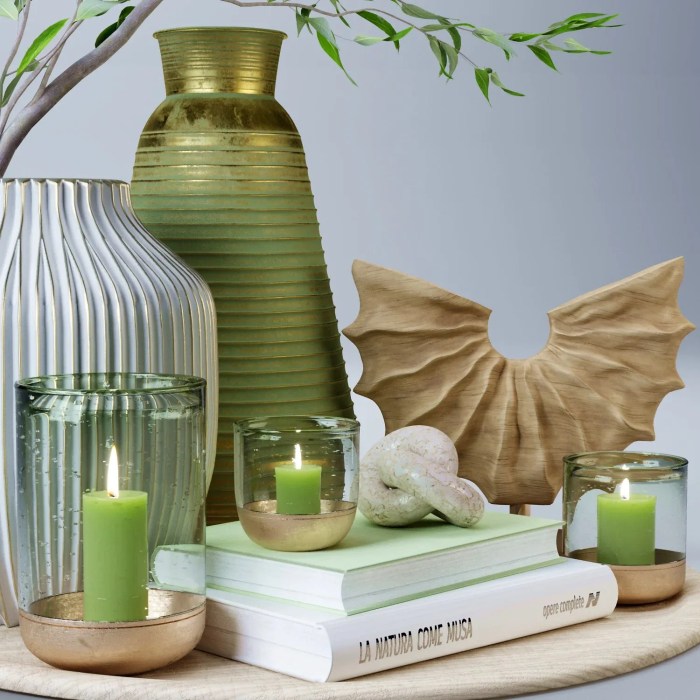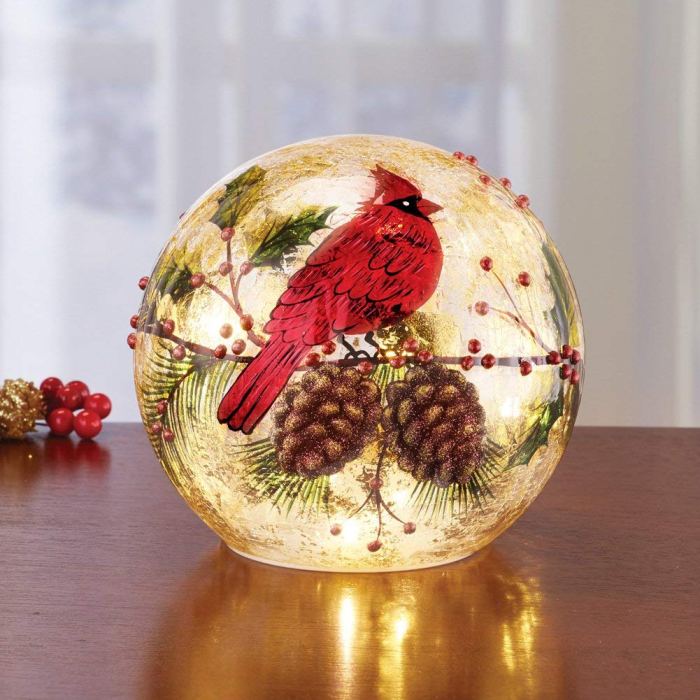Tabletop Decorations are more than just adornments; they’re the subtle storytellers of your space, reflecting personal style and setting the tone for gatherings. From minimalist chic to rustic charm, the possibilities are as boundless as your imagination. This guide delves into the art of tabletop design, exploring various styles, materials, and techniques to help you create captivating arrangements for any occasion.
We’ll cover everything from selecting the perfect color palette and textures to mastering the principles of visual hierarchy and incorporating the magic of lighting to truly transform your table.
We’ll explore diverse decorative styles, providing practical tips and inspirational ideas to elevate your tabletop presentations. Whether you’re planning an intimate dinner party, a festive holiday celebration, or a grand wedding reception, this comprehensive guide will equip you with the knowledge and confidence to craft stunning and memorable tabletop displays. Learn to seamlessly blend different textures, colors, and elements to create balanced and visually appealing centerpieces that leave a lasting impression.
DIY Tabletop Decorations

Creating unique and personalized tabletop decorations can significantly enhance the ambiance of any space. Whether it’s for a special occasion or simply to refresh your home décor, DIY projects offer a cost-effective and creative approach. This section explores simple yet impactful DIY projects, along with techniques for customizing store-bought items.
DIY Tabletop Decoration Projects
Below are three distinct DIY projects, each utilizing readily available materials and requiring minimal crafting expertise. These projects demonstrate how simple materials can be transformed into attractive and personalized decorations.
- Mason Jar Lanterns: Gather clean mason jars, battery-operated tea lights, twine, and decorative elements like lace or dried flowers. First, clean the jars thoroughly. Then, wrap twine around the jars, securing the ends with glue. Finally, place a tea light inside each jar and add your chosen decorative elements. The warm glow creates a charming and rustic atmosphere.
- Painted Wine Cork Coasters: Collect used wine corks, acrylic paints, sealant, and felt squares. Clean the corks thoroughly and let them dry completely. Once dry, paint them with your chosen colors and designs. After the paint has dried, apply a sealant to protect the paint. Glue felt squares to the bottom of each cork to create a protective coaster base.
- Upcycled Book Page Flowers: Gather old books with interesting pages, wire, glue, and optionally, acrylic paint. Cut out various shapes from the book pages to create flower petals. Roll and shape the petals, then glue them together to form flowers. Use wire to create stems and leaves. Optionally, paint the flowers for a more vibrant look.
These delicate flowers can be arranged in a vase or incorporated into other decorative pieces.
Customizing Store-Bought Decorations
Even commercially available decorations can be personalized to reflect individual style and preferences. Simple techniques can transform mass-produced items into unique statement pieces.Adding personal touches to store-bought decorations can involve a variety of methods. For instance, plain ceramic vases can be enhanced with decoupage, adding patterned napkins or fabric scraps for a unique textured look. Similarly, plain candles can be customized with decorative wax melts or by adding ribbons and embellishments.
Simple spray paint can transform the color and finish of many items, such as wooden boxes or metal containers. Consider adding personalized touches like hand-painted monograms or family initials for a truly unique look.
Repurposing Everyday Items for Tabletop Decorations
Transforming everyday items into decorative pieces offers a sustainable and creative approach to home décor. Repurposing items reduces waste and adds a unique character to your space.
- Glass Bottle Vases: Clean and decorate empty glass bottles (wine bottles, soda bottles, etc.) with paint, twine, or other decorative elements. These repurposed bottles can then serve as elegant vases for fresh or dried flowers.
- Tin Can Planters: Clean and decorate empty tin cans (coffee cans, soup cans, etc.) with paint, decoupage, or other embellishments. These can then be used as small planters for succulents or herbs, adding a touch of greenery to your tabletop.
- Fabric Scrap Coasters: Use leftover fabric scraps to create unique coasters. Cut out squares or circles of fabric, layer them with interfacing for stability, and stitch them together. These coasters offer a soft and personalized touch to your table setting.
The Impact of Lighting on Tabletop Decor: Tabletop Decorations

Lighting plays a crucial role in transforming a simple tabletop arrangement into a visually stunning and memorable display. The right lighting scheme can enhance colors, textures, and overall ambiance, creating a mood that complements the occasion and reflects personal style. Careful consideration of light type, intensity, and placement is key to achieving the desired effect.The strategic use of different lighting types significantly impacts the visual appeal of a tabletop setting.
Ambient lighting provides general illumination, setting the overall mood. Task lighting focuses light on a specific area, such as a centerpiece, enhancing its details. Accent lighting highlights specific elements, drawing the eye to particular features and adding depth to the arrangement. The interplay of these three types creates a layered and dynamic visual experience.
Ambient Lighting’s Role in Setting the Mood, Tabletop Decorations
Ambient lighting establishes the overall atmosphere of the tabletop setting. Soft, warm-toned ambient lighting, such as that provided by string lights or a softly glowing lamp, creates a relaxed and inviting atmosphere, perfect for intimate gatherings or romantic dinners. Conversely, brighter, cooler ambient lighting, perhaps from overhead fixtures, can generate a more energetic and vibrant mood, ideal for lively parties or celebratory events.
The color temperature of the light source directly impacts the perceived mood; warmer tones (yellowish) feel cozier, while cooler tones (bluish) feel more modern and crisp.
Accent Lighting for Highlighting Key Elements
Accent lighting is essential for drawing attention to specific elements within the tabletop arrangement. This could involve using small spotlights to highlight a particularly intricate centerpiece, or strategically placed candles to illuminate the textures of a tablecloth or place settings. By selectively illuminating key elements, accent lighting adds visual interest and guides the viewer’s eye through the arrangement, creating a more engaging and dynamic display.
For example, placing a small LED tea light within a glass vase containing flowers will dramatically highlight the petals and leaves, creating a beautiful focal point.
Candles, Lanterns, and Other Light Sources for Ambiance
Candles, lanterns, and other decorative light sources not only provide illumination but also contribute significantly to the overall ambiance of the tabletop setting. The flickering light of candles creates a warm, romantic atmosphere, while the soft glow of lanterns adds a touch of rustic charm. The choice of light source should complement the overall style and theme of the arrangement.
For instance, sleek, modern LED candles might be appropriate for a contemporary setting, while traditional beeswax candles would be more fitting for a rustic or vintage theme. The use of different heights and styles of candles or lanterns can also add visual interest and depth to the arrangement. Consider using a mix of pillar candles, votive candles, and tea lights to create a layered and visually appealing display.
Mastering the art of tabletop decoration is a journey of creativity and self-expression. By understanding the principles of design, exploring diverse styles, and experimenting with different materials, you can transform your tabletop into a captivating focal point. Remember, the key is to create a cohesive and visually appealing arrangement that reflects your personal style and enhances the overall ambiance of your space.
So, unleash your inner designer and let your tabletop tell your unique story!